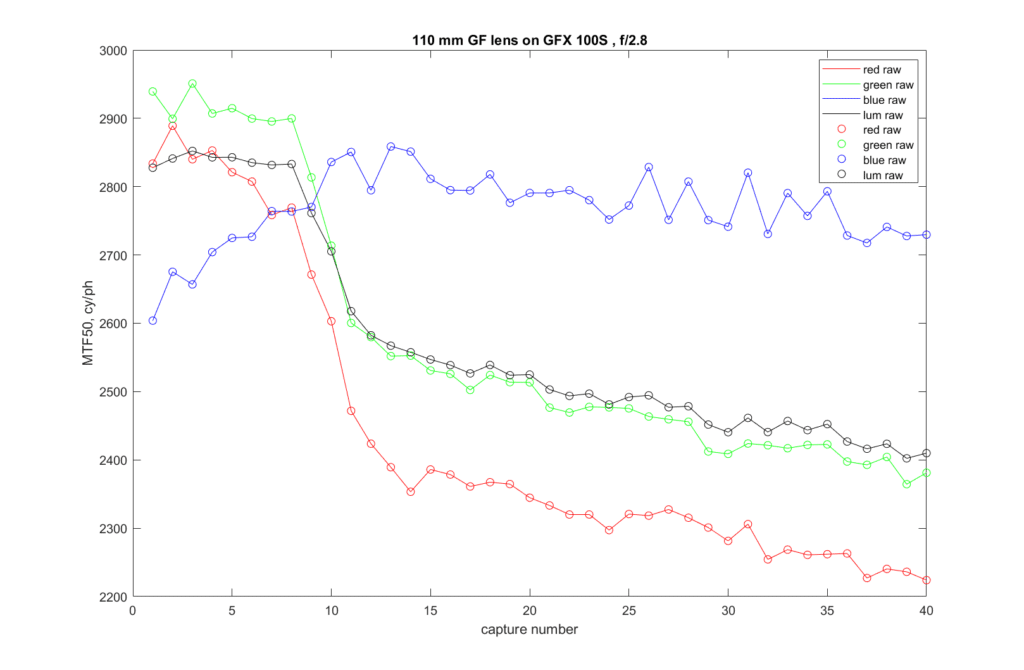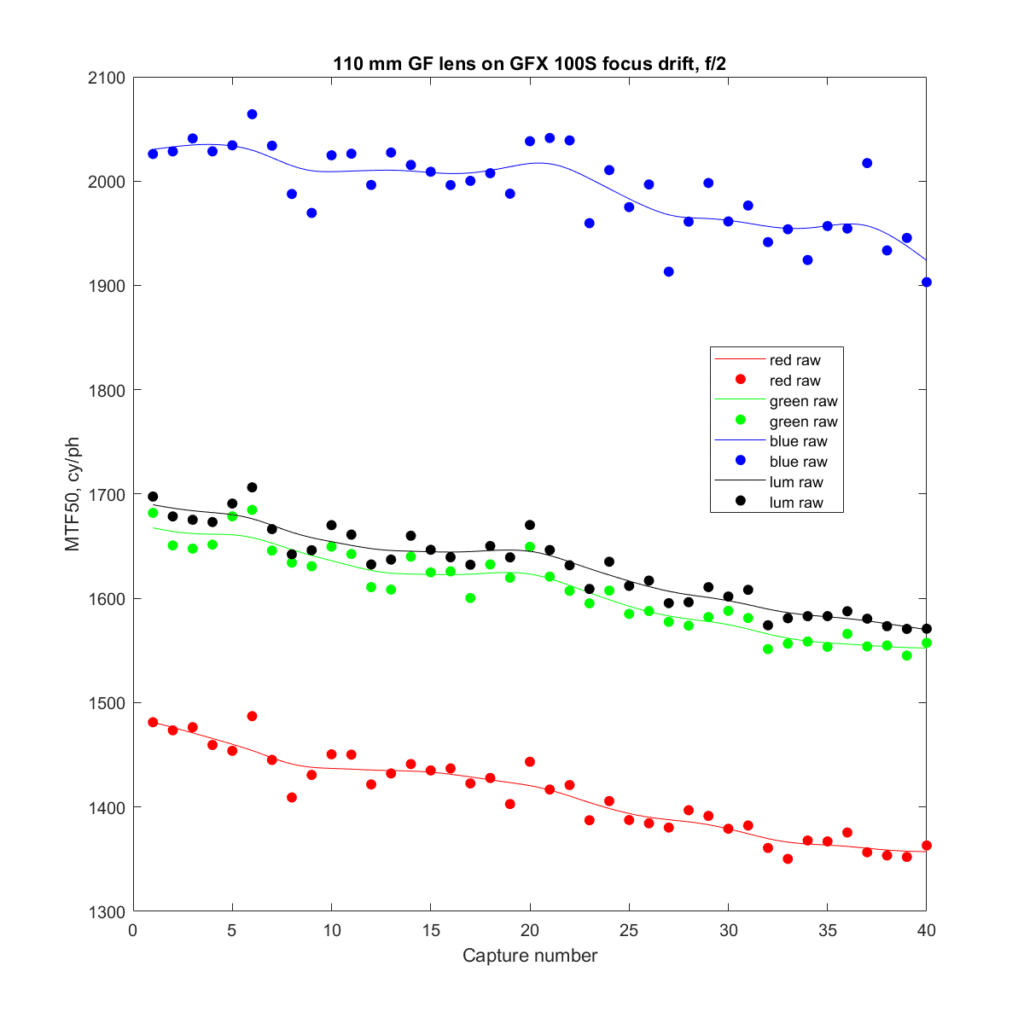This is one in a series of posts on the Fujifilm GFX 100S. You should be able to find all the posts about that camera in the Category List on the right sidebar, below the Articles widget. There’s a drop-down menu there that you can use to get to all the posts in this series; just look for “GFX 100S”.
I have written in this blog about focus drift with the GFX cameras. I just had my first experience with it with the GFX 100S and the 110 mm f/2 GF lens. Lens set at f/2.8. I used the internal intervalometer to make a sequence of 40 images, using the silent shutter and a 1 second delay.
Here are the raw channel MTF50s that resulted:
The drift is not huge — note the bottom of the y-axis is 2200 cycles/picture height, but you’d surely notice it for critical landscape work. The drift seems to be more or less continuous, slowing in the last half of the 40-shot series.
Vibration: camera on heavy RRS legs on slate on 6 inches of concrete on grade. A mile from the nearest road. The camera did open and close the diaphragm between each shot.
Doing a run with a 1-minute delay, the shots 5 seconds apart, and the camera set to f/2 produced maybe a bit less drift, but I’m unwilling to draw firm conclusions from that since I don’t know how repeatable the phenomenon is.


“The camera did open and close the diaphragm between each shot.”
Seems like the the obvious culprit as it’s the only thing moving. Is it worth testing with the lens WO to verify?
Regards
Mike B
I could do that (and I probably will), but I”m not sure that why the focus is drifting is anywhere near as important than the fact that it’s drifting, unless you’re planning on using your GF lenses wide open when you’re doing repeated shots with manual focusing.
I’d suggest feedback to Fuji (showing the cause) is a good reason. Not sure if firmware could fix it mind you.
Mike B
This is really scary! I thought that modern lenses should keep manual focus position by electronic means, although I’ve never handled those Fuji Lenses. If that is due to vibration, then it would be useful to compare with the results with mechanical shutter.
I am also amazed by the separation of the RGB lines and their different behavior in both lenses tested.
It would be surprising of the R, G, and B lines were not separated. That would mean that the lens had no longitudinal chromatic aberration.
Jim
A test for focus drift with the A7RIV would be interesting. Also, with other GF lenses on the 100s. Do you have a sense at what stopped down aperture this does or does not matter. Could focus drift be seen on a 16x 20 inch print shot at f/11?
For example: Using your photos of clouds and hills taken with the Rodenstock lens, I believe, would focus with a drifting GF lens stopped down to my hypothetical f/11, have mattered in a 16×20 inch print.
I also wonder what drifting focus effects might be seen between stitched frames with a stopped down aperture. May not matter at f/11. Could matter for some subjects and not others.
Thanks for your thoughts,
Claude Fiddler
Expected results from that wide an aperture, I would venture to say that by f4 or 5.6 it should be virtually eliminated.
If you are assuming that the focus drift is due to the aperture closing down for each exposure then why not expose with the lens already stopped down?
First off, I’m not assuming any reason for the focus drift.
Second, what you suggest is not an option for interval shooting on the GFX 100S.